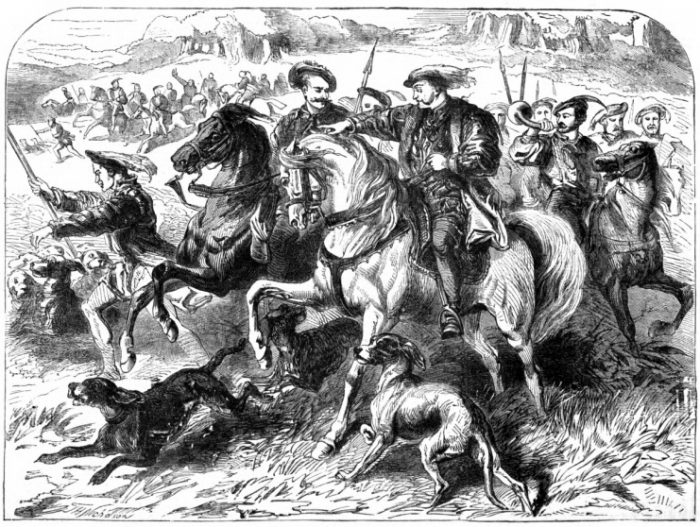The other day I read a particularly delectable love letter. It was written by a man called Henry VIII to Anne Boleyn. Remember them? You must. Even if you do not know your history, you cannot possibly have missed them on Netflix. However, I do not particularly wish to go over the unappetizing details of their relationship. You can google it up. I am here to talk about their letters; about one letter in particular. It is common knowledge that seventeen handwritten letters from King Henry VIII to Anne Boleyn have survived. Of these the third letter is like I said before, ‘delectable’. Let’s find out why.
The king was then courting Anne Boleyn, a very educated and individualistic woman unusual for her times. In the third letter of this series he writes:
“And to cause you yet oftener to remember me, I send you, by the bearer of this, a buck killed late last night by my own hand, hoping that when you eat of it you may think of the hunter; and thus, for want of room, I must end my letter, written by the hand of your servant, who very often wishes for you instead of your brother.”
Now, hunting was a common royal sport. In fact the king was also known to love hunting quite a lot, more than he loved his women some say. When he was young, he enjoyed reading ‘The Art of Hunting’ by William Twiti and ‘The Mayster of Game’ by Edward who was also the second Duke of York. He also enjoyed eating quite a lot which explains his obesity towards the end of his life. Let’s get back to the letter and find out why a gift of raw meat was considered a generous and romantic gift fit for the king’s stature.

For the uninitiated, buck is a species of deer commonly found in England. But venison was an extremely premium meat and was commonly reserved for the Crown or members of aristocracy. Basically it was only consumed by those who could afford to keep their own deer park. It was not available commercially and hence could not be purchased. One could either obtain it by hunting, or by being ‘gifted’ it as a special favour. So, no flimsy roses or trinkets for the future queen consort, no sir. Only, the meatiest gift for the gritty Anne Boleyn.
But the burning question is how did she have it? Stewed, roasted or baked into a pie? Alas, we have no means of knowing that. Assuming the Boleyn family was also an aristocratic one and received considerable attention at that time, we can assume they must have cooked it in a fashion not too unlike that practiced in the royal kitchen. Hence, let’s take a look at a venison roast recipe from the kitchen of Henry VIII as it appears in ‘Cooking & Dining in Tudor & Early Stuart England’ by Peter Brears.
Ingredients for the Roast:
1 joint of venison (butchers or steaks available from some supermarkets)
100 g streaky bacon
Cloves, rosemary, thyme and savory (herb)
Method:
Weigh the joint and calculate the cooking time at 25 minutes per 450 g, plus another 25 minutes. Put the meat into boiling water and make sure it does not stick to the bottom of the pan. Cover and simmer gently for half of its cooking time. Then, remove from the pan and plunge into cold water for a couple of minutes.
Lard (wrap bacon around the joint/steaks) and stick cloves (about 20) and rosemary sprigs into the meat (don’t forget to remove these after roasting). Make small holes (with a skewer or knife) into the meat and pack with thyme and savoury. Finally, spit roast, or bake, on a grid in a roasting tin at 170° C/ 325° F/gas mark 3 for the remainder of the cooking time.
Ingredients for the orange sauce
Juice of one orange
Juices from the pan in which you boiled the venison
Chopped sweet herbs
Method:
Mix everything and heat in a pan. Check seasoning. Pour the sauce into a dish and place the roast venison on top. Serve hot.
Trivia
Anne Boleyn was beheaded three years after her marriage to King Henry VIII. On the morning of her execution, the king went on an elaborate hunting excursion in Epping Forest.
The kitchen at the Hampton Court Palace was spread across 55 rooms.
King Henry VIII had a French chef called ‘Peter the Sweet’.
He spent £3-5000 a year on wine shipped from Bordeaux.



























